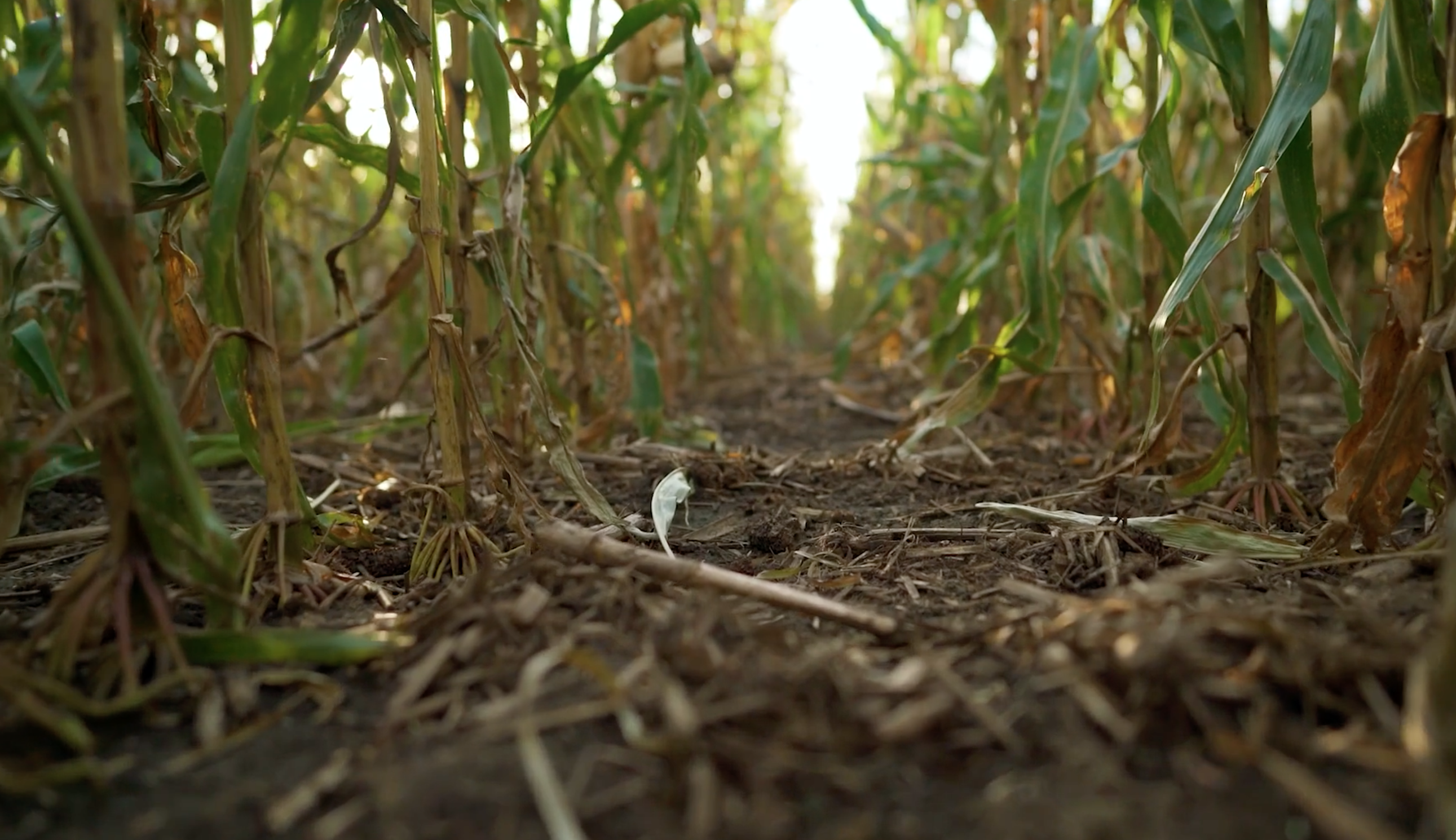In nature, a field or meadow experiences a circular life cycle: Plants grow, die, and decompose, building the soil for new plants to thrive. The regenerative agriculture techniques used by Gevo partner farmers make use of the same cyclical processes of nature, harnessing the power of organic material through practices like composting.
Compost, and its use as a soil amendment, not only reduces food and animal waste and improves the microbiology of the soil; it can also be a cost-saving method for farmers looking to lower their fertilizer inputs.
When building a better bio-based renewable fuel, Gevo knows that it’s more than what you put in the soil—it’s what you put on it.
Compost Turns Waste into Nutrients
Compost is formed by the decomposition of carbon-rich and nitrogen-rich materials, creating a nutrient-dense soil amendment for farm fields that can reduce the need for synthetic fertilizers.
Composting is an easy process for farmers who are looking to make use of waste materials around the farm. The building blocks of compost are:
- “Browns:” Carbon-based materials such as leaves, straw, paper, wood chips, or yard debris
- “Greens:” Nitrogen-based materials such as fruit and vegetable scraps, manures, eggshells, or grass
- Oxygen: Compost is created through aerobic decomposition, meaning it needs access to oxygen to complete the process. Periodically turning compost piles exposes the materials to oxygen and accelerates the process.
- Water: Water maintains the microbial life of the compost, which is essential to feeding the soil once compost is applied.
Compost, stored in long piles called windrows or enclosed in bins, often reaches a temperature of 130 degrees Fahrenheit at the height of decomposition, as microorganisms feed on the material.
After curing, what was once a pile of various waste materials becomes a dark, rich, mulch-like mixture that can be applied directly to farm fields.
Benefits of Composting
Above all, the main purpose of composting is to build soil organic matter, putting nutrients back into the soil. A combination of deep tillage, erosion events, and intensive cropping systems has compounded nutrient depletion within the soil.
One study in California showed that when compost was combined with cover cropping in an organic system, soil carbon content increased by 0.07 percent a year (an annual increase that exceeds the current recommendation of “4 per 1000” for food security and climate called for by the United Nations).
Like many regenerative agriculture techniques, the application of compost to farm fields has numerous benefits:
- Increased resistance to climate-related weather events like drought or heat waves
- Increased soil organic matter that can support greater yields, water retention, and soil structure
- Addition of macro- and micronutrients to the soil
- Enables reduction of synthetic fertilizer applications
- Suppression of soilborne diseases
- Reduction of animal feed due to increased plant growth on rangelands
Composting Is a Circular System

For farmers that integrate livestock into their fields, composting is a key component of that circular economy. Here’s how it works:
- Cows graze on pastureland, stimulating the soil and creating manure directly added to the field
- The manure on the corn fields adds nutrients directly back to the soil and increase yields
- Corn stalks produce animal feed for the cows
Utilizing compost reduces the number of external inputs being introduced into the ecosystem, reducing agriculture’s impact on the environment while improving its results.
Compost: The Bottom Line
For Gevo, regenerative agriculture is all about using the cycles of nature to create a more sustainable bio-based renewable fuel, rather than working outside natural processes. Compost is an integral part of a regenerative agriculture system, mimicking the lifecycle of nature as waste decomposes and is returned to the soil.
Incorporating compost supports the soil microbiome, manages farm waste, and is a simple and efficient practice that helps plants (and farmers) thrive.
